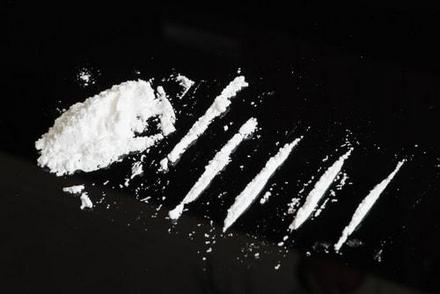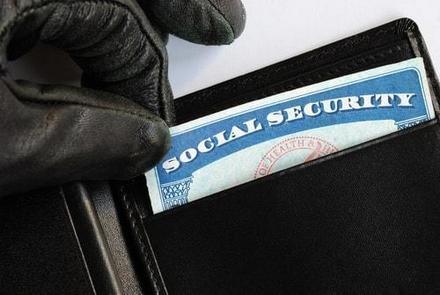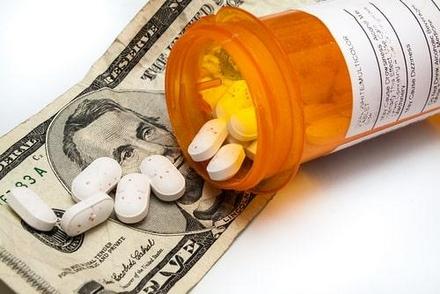TELEPHONES ANSWERED 24 HOURS A DAY
Recent Blog Posts
Definition of a Gang
 When someone thinks of a gang, he or she may think of urban youth participating in drug crimes and homicides. While this is often true, gangs may also consist of motorcycle gangs, prison gangs, hate groups, crime groups organized by adults, terrorist organizations, and other types of security threat groups. No matter the type of gang, the activities the group may participate in may count as violent crimes that could come with very serious consequences.
When someone thinks of a gang, he or she may think of urban youth participating in drug crimes and homicides. While this is often true, gangs may also consist of motorcycle gangs, prison gangs, hate groups, crime groups organized by adults, terrorist organizations, and other types of security threat groups. No matter the type of gang, the activities the group may participate in may count as violent crimes that could come with very serious consequences.
What Is a Gang?
There are two different definitions of a gang: the federal definition and the state definition. While the federal definition of a gang is used by the Department of Justice and the Department of Homeland Security’s Immigration and Customs Enforcement, the state definition of a gang varies by each state. The federal definition of a gang is an association of at least three individuals who:
- Collectively identify themselves by adopting a group identity to create an atmosphere of fear and intimidation, which could include a common name, slogan, sign, symbol, tattoo, style of clothing, and hand sign, to name a few;
How Have Hate Crimes Increased Since Last Year?
 Hate crimes are a very serious offense, which could cost you your overall quality of life. When faced with a hate crime, there are many unwanted consequences that could decrease the chance of obtaining employment and relationships with loved ones. Hate crimes can be violent in nature, and can cause serious injury or even death to others.
Hate crimes are a very serious offense, which could cost you your overall quality of life. When faced with a hate crime, there are many unwanted consequences that could decrease the chance of obtaining employment and relationships with loved ones. Hate crimes can be violent in nature, and can cause serious injury or even death to others.
What Is a Hate Crime?
Hate itself is not necessarily a crime. However, a hate crime is defined as any type of crime, such as murder, arson, or vandalism, but with an added element of bias. According to the Federal Bureau of Investigation (FBI), a hate crime is when a person commits a criminal offense against someone else or other property due to the offender’s bias against a race, religion, disability, gender and gender identity, ethnicity, or sexual orientation.
Hate crimes have a devastating impact on families and communities, and individuals who commit such crimes are perceived to promote hatred and intolerance. Every year, the FBI investigates hundreds of cases that relate to hate crimes.
How Does Cocaine Affect Your Body?
 The majority of people know that illegal drugs can be especially harmful to their bodies. Being charged with a drug crime, such as possession of cocaine, is a very serious offense, which can have an adverse effect on your future employment opportunities, relationships with loved ones, and your health, to name a few. To be better educated on the negative effects of drugs, it is best to understand how drugs affect your body.
The majority of people know that illegal drugs can be especially harmful to their bodies. Being charged with a drug crime, such as possession of cocaine, is a very serious offense, which can have an adverse effect on your future employment opportunities, relationships with loved ones, and your health, to name a few. To be better educated on the negative effects of drugs, it is best to understand how drugs affect your body.
What Is Cocaine and What Is Its Effects on the Body?
Cocaine is an illegal drug that can be snorted, smoked, or injected. Within seconds, this drug will affect the brain and major organs. When cocaine is used, the user’s pupils will dilate due to increased serotonin levels in the brain. The user’s heart rate and blood pressure will increase, and the blood vessels will constrict, making the user start to feel warm. As the arteries constrict, blood flow may be blocked and could potentially cause a heart attack to occur.
Identity Theft and Its Effect on Taxes
 We are now approaching tax season, and many of us are not looking forward to getting them filed. Over the past few years, since the evolution of technology, the number of people affected by identity theft has increased, and that number, unfortunately, continues to grow. Identity theft has been shown to affect tax documents and pertinent information, and individuals filing their taxes during the season may face serious issues because of the type of theft that had occurred.
We are now approaching tax season, and many of us are not looking forward to getting them filed. Over the past few years, since the evolution of technology, the number of people affected by identity theft has increased, and that number, unfortunately, continues to grow. Identity theft has been shown to affect tax documents and pertinent information, and individuals filing their taxes during the season may face serious issues because of the type of theft that had occurred.
Ways the IRS Has Tried to Combat Identity Theft
To combat the ever-growing issue of identity theft and how it can adversely affect tax information, the Internal Revenue Service (IRS) created a way for individuals to be better protected from identity theft. This tool was called the Identity Protection PIN (IP PIN), and, in 2016, the IRS suspended the tool because of a potential security breach. The IP PIN was supposed to be used for individuals affected by identity theft and fraudulent tax returns so that they could have their own personal identification number (PIN) that would confirm their identity before a tax return would be filed. The tax return would be rejected if the PIN was entered incorrectly.
The Facts and Myths of Sex Crimes
 Sex crimes are horrific in nature and can cost the person committing the crime and the person affected by the crime severe consequences. What many people do not know about sex crimes is that there are many myths attached. No incident of a sex crime is the same, and each person who commits this crime has a different mindset and way of committing the act. However, being charged with a sex crime is serious and may come with unwanted consequences.
Sex crimes are horrific in nature and can cost the person committing the crime and the person affected by the crime severe consequences. What many people do not know about sex crimes is that there are many myths attached. No incident of a sex crime is the same, and each person who commits this crime has a different mindset and way of committing the act. However, being charged with a sex crime is serious and may come with unwanted consequences.
What to Know about Sex Crimes
There is a huge misconception that most or all sex crimes are committed by strangers. While this may be true in some incidents, most sex crimes are committed by a family member, friend, significant other, spouse, or other trusted individual. Although most males are held accountable for sex crimes, females have also been responsible for these types of crimes. Even though there may be some children who have been sexually assaulted will grow up to sexually assault others, the majority of offenders were not sexually assaulted at a young age.
Cyberstalking Is Now a Hate Crime in Illinois
 Cyberstalking has been an ongoing issue for many years. With the evolution of the Internet and overall technology, there have been easier ways to target specific social groups using media. In January 2018, cyberstalking has become a hate crime, which may lead to serious consequences if an individual is caught cyberstalking and targeting certain groups.
Cyberstalking has been an ongoing issue for many years. With the evolution of the Internet and overall technology, there have been easier ways to target specific social groups using media. In January 2018, cyberstalking has become a hate crime, which may lead to serious consequences if an individual is caught cyberstalking and targeting certain groups.
What Is Cyberstalking?
Cyberstalking is defined as when a person uses electronic communication, such as email, text messages, and social media, to direct a specific person or target group, causing the target to fear for safety or suffer from emotional distress. Cyberstalking could also be defined as when a person uses electronic communication to cause a threat of potential bodily harm, sexual assault, confinement, or restraint of threat. Cyberstalking often causes enough emotional trauma that would allow for the person on the receiving end to fear for his or her safety.
Illegal Drugs in the Workplace
 Being charged with possession and use of illegal drugs is very serious and could cost you your overall quality of life. However, if you are in possession of illegal drugs in the workplace, whether in retail or corporate, there is major cause for concern. You may lose your job, and you may also lose all possibilities of future employment. Not only will you suffer the consequences, your employer may lose thousands of dollars to increased health care, legal liabilities, worker’s compensation costs, and lost productivity.
Being charged with possession and use of illegal drugs is very serious and could cost you your overall quality of life. However, if you are in possession of illegal drugs in the workplace, whether in retail or corporate, there is major cause for concern. You may lose your job, and you may also lose all possibilities of future employment. Not only will you suffer the consequences, your employer may lose thousands of dollars to increased health care, legal liabilities, worker’s compensation costs, and lost productivity.
What Can Illegal Drugs Cost the Workplace?
Of the estimated 14.8 million Americans who use illegal drugs, roughly 70 percent of those users are employed. Marijuana, cocaine, and prescription drugs have been found to be the most widely used drug in the workplace, and employees who have held at least three jobs within a five year time span have been found to be at least twice as likely to use illegal drugs as their counterparts, employees who have had two or fewer jobs within the same time span.
Difference Between Domestic Violence and Sexual Violence?
 Domestic violence and sexual violence is often perceived to be interchangeable. Sexual violence can occur by an otherwise trusted family member, spouse, or significant other at home. However, domestic violence and sexual violence are very distinct with different consequences.
Domestic violence and sexual violence is often perceived to be interchangeable. Sexual violence can occur by an otherwise trusted family member, spouse, or significant other at home. However, domestic violence and sexual violence are very distinct with different consequences.
What Is Domestic Violence?
Domestic violence is defined as the occurrence of when a partner or family member abuses another person physically, emotionally, financially, or sexually. The violence may occur only once, but is normally behavior that is repeated.
What Is Sexual Violence?
Sexual violence is defined as the occurrence of when a person is sexually abused. Many different forms of sexual violence include, but are certainly not limited to, child sexual abuse, sexual assault, sexual exploitation, prostitution, genital mutilation, and rape. Like domestic violence, sexual violence may also occur in a single incident or may be repeated over time.
Mortgage Fraud Criminal Charges
 As there are more and more people looking to buy homes, and technology is always evolving, the mortgage fraud rates have increased significantly. People are buying homes with the assumption that there will be no issues that follow. However, there are far too many people who must face foreclosure because of the fraud that took place.
As there are more and more people looking to buy homes, and technology is always evolving, the mortgage fraud rates have increased significantly. People are buying homes with the assumption that there will be no issues that follow. However, there are far too many people who must face foreclosure because of the fraud that took place.
Mortgage Fraud in the Numbers
In the second quarter of 2017, there have been an estimated 13,404 mortgage applications estimated to have indications of fraud. Compared to the second quarter of 2016, the mortgage application fraud risk index has increased by 16.9 percent. Many people argue that the continued shift from the refinance-heavy market to a purchase market is a major factor in the increase of mortgage fraud risk. From the second quarter of 2016, there was also a 48 percent increase in loan shares originated through wholesale channels.
The Dangers of Drug Use
 For many years, drugs have had a negative impact on society, which is a huge cause of injuries, illnesses, and even deaths. Every day, over 50 people die in the United States from a prescription drug overdose, and over 120 people die every day from overall drug abuse and overdose. Unfortunately, the statistics of the use of illegal drugs have increased for over seven years, and there have been alternatives to street drugs.
For many years, drugs have had a negative impact on society, which is a huge cause of injuries, illnesses, and even deaths. Every day, over 50 people die in the United States from a prescription drug overdose, and over 120 people die every day from overall drug abuse and overdose. Unfortunately, the statistics of the use of illegal drugs have increased for over seven years, and there have been alternatives to street drugs.
Drug Overdose Death Statistics
Chicago is well-known for its massive crime scenes and drug busts. In the urban areas of major cities, drugs, violence, and injuries often coincide. From the years 2007 to 2014, prescription drugs, cocaine, and heroin have caused thousands of deaths that could easily have been prevented.
- In 2007, prescription drug overdoses accounted for 19,601 deaths. Four years later, in 2011, the number of deaths caused by overdosing on prescription drugs increased to 22,810. In 2014, the number increased to 25,760 deaths caused by prescription drug overdoses.




